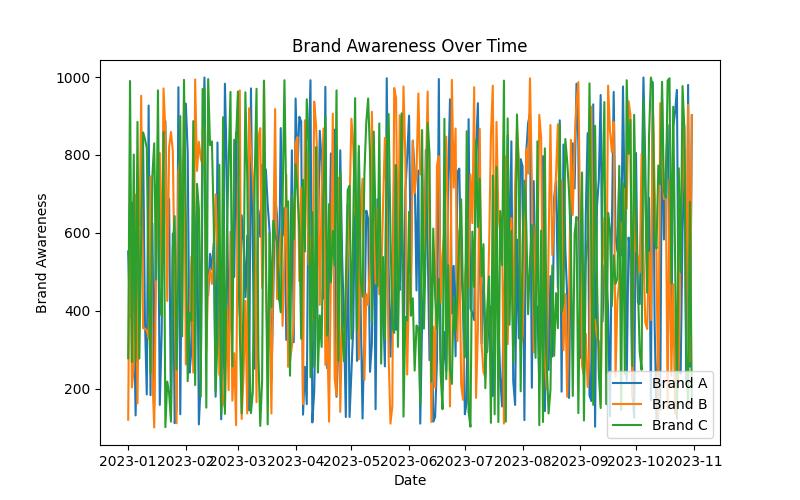What readers will learn from this article:
- The definition and significance of branded content in marketing.
- The benefits and objectives of branded content marketing.
- How to build brand awareness, credibility, loyalty, and engagement through branded content.
- The importance of identifying brand values and target audience.
- Strategies for crafting compelling branded content.
- Choosing the right platforms and channels for distribution.
- Measuring success and analyzing data.
- Evolving strategies with customer feedback.
- Case studies and success stories of branded content campaigns.
- Collaborating with content creators and influencers.
- Adapting to evolving marketing trends and technologies.
In today’s competitive digital landscape, standing out from the crowd is crucial for entrepreneurs and small to medium business owners. One highly effective strategy for achieving this is through branded content marketing. But what exactly is branded content, and why is it so significant?
Definition and significance of branded content
Branded content refers to the creation and distribution of valuable, relevant, and entertaining content that aligns with a brand’s values and objectives. It is an essential aspect of modern marketing, allowing businesses to engage with their target audience on a deeper level and build a strong and lasting connection.
The significance of branded content lies in its ability to cut through the noise and capture the attention of consumers. Traditional advertising methods are becoming less effective as consumers become more adept at tuning out promotional messages. Branded content provides a way for businesses to break through this barrier and connect with their audience by providing content that is genuinely valuable and engaging.
Differentiating branded content from traditional advertising
While traditional advertising relies on interrupting the audience’s experience with promotional messages, branded content takes a more subtle approach. Instead of pushing products or services directly, branded content seeks to provide value and build trust. By offering valuable and relevant content, businesses can establish themselves as a trusted authority in their industry and create a positive association with their brand.
Overview of the benefits and objectives of branded content marketing
The benefits of branded content marketing are numerous and impactful. By implementing a well-crafted branded content strategy, entrepreneurs and small to medium business owners can:
- Build brand awareness and recognition: Branded content allows businesses to showcase their expertise and values, making a memorable impression on their target audience.
- Establish brand credibility and trustworthiness: Through valuable and informative content, brands can position themselves as experts in their industry, gaining the trust and confidence of their customers.
- Foster brand loyalty and advocacy: When brands consistently provide content that resonates with their audience, they can cultivate a loyal customer base who not only continues to support the brand but also becomes advocates, spreading positive word-of-mouth.
- Enhance customer engagement and interactivity: Branded content encourages active engagement from the audience through comments, likes, shares, and other forms of interaction, boosting brand visibility and reach.
- Drive lead generation, conversions, and sales: Engaging branded content can effectively guide the audience through the customer journey, ultimately leading to increased conversions and sales.
Now that we understand the impact and benefits of branded content marketing, let’s delve deeper into the strategies and tactics that will help entrepreneurs and small to medium business owners excel in this realm.

Understanding the Impact of Branded Content
Branded content has a profound impact on a brand’s overall success. Let’s explore the key ways in which branded content can elevate your marketing efforts.
Building brand awareness and recognition
In a crowded marketplace, it’s essential to make your brand stand out. Branded content allows you to create a unique and memorable identity that resonates with your target audience. By consistently delivering valuable and engaging content, you can increase brand awareness and recognition, ensuring that your brand remains top-of-mind when consumers are making purchasing decisions.
Establishing brand credibility and trustworthiness
Trust is the foundation of any successful brand-consumer relationship. Branded content offers an opportunity to showcase your expertise and knowledge in your industry. By providing valuable and reliable information, you can position your brand as a trusted authority, gaining the confidence and trust of your target audience.
Fostering brand loyalty and advocacy
Building a loyal customer base is key to long-term success. Branded content allows you to create a genuine connection with your audience by addressing their pain points, answering their questions, and providing solutions to their problems. By consistently delivering valuable content, you can foster brand loyalty and turn satisfied customers into passionate brand advocates.
Enhancing customer engagement and interactivity
Branded content is inherently interactive and encourages active engagement from your audience. Whether it’s through comments, likes, shares, or participation in contests or quizzes, branded content creates opportunities for meaningful interactions with your customers. This engagement not only strengthens the bond between your brand and your audience but also increases brand visibility and reach as content is shared across social media platforms.
Driving lead generation, conversions, and sales
Ultimately, the success of any marketing strategy is measured by its impact on the bottom line. Branded content, when executed effectively, can guide your audience through the customer journey, from initial awareness to consideration and ultimately conversion. By providing valuable content that addresses the needs and desires of your target audience, you can generate leads, increase conversions, and drive sales.
Now that we’ve explored the impact of branded content, let’s move on to the crucial steps involved in creating a successful branded content strategy.
Identifying Brand Values and Target Audience
To create effective branded content, it’s essential to have a clear understanding of your brand’s values and mission, as well as the needs and preferences of your target audience.
Defining brand values and mission
Before embarking on any branded content initiatives, take the time to define your brand’s values and mission. What sets your brand apart from the competition? What do you want to be known for? Understanding your brand’s unique identity will guide your content creation and ensure consistency across all marketing channels.
Conducting thorough market research and analysis
To develop content that resonates with your target audience, it’s necessary to conduct thorough market research and analysis. Understand the demographics, interests, and behavior of your target audience. Identify their pain points and challenges, and determine how your brand can provide value and solutions.
Identifying and understanding the target audience
Once you have a clear picture of your target audience, go beyond demographics and gain a deeper understanding of their motivations, desires, and aspirations. What drives them? What are their goals? By developing buyer personas, you can create content that speaks directly to the needs and interests of your audience, fostering a stronger connection and engagement.
Analyzing competitor strategies and differentiators
To stand out in a crowded marketplace, it’s essential to understand your competitors’ strategies and differentiators. Analyze their branded content initiatives and identify areas where you can differentiate your brand. By offering unique perspectives and solutions, you can position your brand as a standout choice for your target audience.
Utilizing customer feedback and preferences
Your existing customers are an invaluable source of insights for your branded content strategy. Gather feedback through surveys, reviews, and social media interactions. Understand their preferences, pain points, and desires. Leveraging this information, you can create content that directly addresses their needs, ensuring maximum impact and engagement.
Now that we have a solid foundation of understanding brand values and the target audience, let’s move on to crafting compelling branded content.

Crafting Compelling Branded Content
Branded content should be compelling, engaging, and resonate with your target audience. Here are some strategies to help you create content that captivates and connects.
Harnessing the power of storytelling in branded content
Storytelling is a powerful tool for creating emotional connections with your audience. Craft narratives that align with your brand values and mission, and that resonate with your target audience. Whether it’s through personal anecdotes, case studies, or customer success stories, storytelling can bring your brand to life and make it relatable to your audience.
Utilizing visuals, graphics, and multimedia elements effectively
Visual elements play a crucial role in capturing and retaining audience attention. Incorporate high-quality images, videos, infographics, and other visual assets to enhance your branded content. Visuals not only make your content more engaging, but they also help convey complex ideas and information in a digestible and memorable way.
Incorporating user-generated content for authenticity
User-generated content (UGC) is a powerful tool for building authenticity and trust. Encourage your audience to create and share content related to your brand. This can include testimonials, reviews, social media mentions, or even user-submitted videos. UGC not only adds a personal touch to your branded content but also demonstrates the real-world impact and value of your products or services.
Leveraging influencer partnerships and collaborations
Influencer marketing has emerged as a highly effective strategy for branded content. Identify influencers in your industry who align with your brand values and have an engaged following. Collaborate with them to create and distribute branded content that reaches a wider audience and lends credibility to your brand. Influencers can provide unique perspectives and insights, further enhancing the value of your content.
Maintaining relevance, uniqueness, and consistency
To captivate your audience, your branded content must be relevant, unique, and consistent. Stay up-to-date with industry trends, consumer preferences, and emerging topics. Offer fresh perspectives and unique insights that differentiate your brand from competitors. Consistency across your content ensures that your brand message remains cohesive and recognizable, reinforcing your brand identity and fostering familiarity with your audience.
Now that we’ve covered the strategies for crafting compelling branded content, let’s explore the importance of choosing the right platforms and channels for distribution.

Choosing the Right Platforms and Channels
Selecting the appropriate platforms and channels for distributing your branded content is essential to maximize its reach and impact. Here are some key considerations to keep in mind.
Understanding the target audience’s digital behavior and preferences
To effectively reach your target audience, you must understand their digital behavior and preferences. Identify the social media platforms, websites, and other online channels that your audience frequents. Tailor your content and distribution strategy to align with their preferences, ensuring that your branded content reaches them where they are most likely to engage.
Selecting appropriate social media platforms for distribution
Social media platforms offer vast opportunities for branded content distribution. Each platform caters to a different demographic and content format. Research the demographics, engagement levels, and content formats of platforms like Facebook, Instagram, LinkedIn, Twitter, and TikTok. Choose the platforms that align with your target audience and content type, ensuring maximum reach and engagement.
Leveraging websites, blogs, podcasts, and videos
Websites, blogs, podcasts, and videos provide additional channels to distribute your branded content. Create a dedicated blog on your website where you can publish in-depth articles and thought leadership pieces. Consider starting a podcast or YouTube channel to share audio or video content with your audience. By diversifying your content distribution across multiple platforms, you can reach a wider audience and cater to different content consumption preferences.
Exploring emerging platforms and trends in branded content
In the rapidly evolving digital landscape, it’s crucial to stay updated with emerging platforms and trends in branded content. Keep an eye on emerging social media platforms, such as Clubhouse or new content formats like live streaming or augmented reality. Evaluating and experimenting with these emerging platforms and trends can help you stay ahead of the competition and reach your target audience in innovative ways.
Now that we understand the importance of choosing the right platforms and channels for branded content distribution, let’s move on to measuring success and analyzing data.
Measuring Success and Analyzing Data
Measuring the success of your branded content efforts is crucial for optimizing your strategy and maximizing results. Here are some key steps to effectively measure success and analyze data.
Establishing key performance indicators (KPIs) for branded content
Before you launch any branded content campaigns, establish clear and measurable Key Performance Indicators (KPIs). These KPIs will help you assess the success of your content initiatives and determine whether they are aligned with your business objectives. Examples of relevant KPIs for branded content include engagement metrics (likes, shares, comments), website traffic, conversions, and sales.
Tracking engagement metrics and user interactions
Engagement metrics provide valuable insights into how your audience is interacting with your branded content. Track metrics such as likes, shares, comments, and click-through rates to assess the level of engagement and interest your content generates. Analyze this data to identify patterns and trends, allowing you to refine your content strategy and create more targeted and engaging content.
Analyzing website traffic, conversions, and customer journey
Branded content should ultimately drive traffic to your website and contribute to conversions and sales. Monitor website traffic and analyze how different pieces of content impact user behavior and conversion rates. Identify the content that generates the most qualified leads and drives the highest conversion rates. This analysis will help you optimize your content strategy and focus on creating content that aligns with your customers’ needs and desires.
Utilizing analytics tools for data-driven decision-making
To effectively measure the success of your branded content efforts, utilize analytics tools such as Google Analytics or social media analytics platforms. These tools provide detailed insights into user behavior, content performance, and audience demographics. Leverage this data to make data-driven decisions, refine your content strategy, and allocate resources effectively.
Now that we understand how to measure success and analyze data, let’s explore the importance of evolving strategies based on customer feedback.
Case Study: The Power of Authenticity in Branded Content
At Smith & Co., a small clothing boutique, we were struggling to stand out in a crowded market. We knew we needed to find a way to connect with our target audience on a deeper level and build brand loyalty. That’s when we decided to dive into branded content marketing.
We started by identifying our brand values and mission. We wanted to emphasize our commitment to sustainability and ethical fashion. Our target audience consisted of environmentally conscious consumers who valued quality and craftsmanship. Armed with this knowledge, we set out to create authentic branded content that would resonate with our audience.
One of our most successful campaigns was a collaboration with a local fashion blogger, Sarah Thompson. Sarah had a strong following of fashion enthusiasts who trusted her recommendations. We reached out to her and proposed a partnership where she would create content featuring our clothing, highlighting our sustainable practices.
Sarah loved the idea and was genuinely passionate about our brand values. She created a series of blog posts and social media content showcasing our pieces, along with behind-the-scenes footage of our production process. Her authentic enthusiasm for our brand shone through in every post.
The response from our target audience was tremendous. Our website traffic increased by 50%, and we saw a 30% increase in sales within the first month of the campaign. Customers appreciated the transparency and authenticity of our branded content, and it helped us establish a strong bond of trust with them.
This collaboration not only boosted our brand visibility but also positioned us as a leader in sustainable fashion. Our customers became brand advocates, spreading the word about our commitment to ethical practices. The success of this campaign taught us the power of authenticity in branded content.
By leveraging the influence of a trusted content creator like Sarah, we were able to connect with our target audience in a meaningful way. Through this experience, we learned that when it comes to branded content, authenticity is key. It’s not just about promoting our products; it’s about telling our brand story in a way that genuinely resonates with our audience.
Evolving Strategies with Customer Feedback
Customer feedback is a valuable resource for improving and optimizing your branded content strategy. Here are some key steps to effectively leverage customer feedback.
Monitoring and analyzing customer feedback and sentiment
Regularly monitor customer feedback across various channels, including social media, reviews, and direct communication. Analyze the sentiment of the feedback to understand how your branded content is resonating with your audience. Identify areas where you can improve and areas where you are excelling. This feedback will provide valuable insights into your customers’ needs and preferences, allowing you to adapt your branded content strategy accordingly.
Identifying opportunities for improvement and optimization
Customer feedback often highlights areas where your branded content can be improved. Look for common themes or pain points mentioned by your customers. Identify opportunities to optimize your content by addressing these areas. This iterative approach to content creation ensures that you are continually refining your strategy and delivering content that truly meets the needs of your audience.
By following these steps, entrepreneurs and small to medium business owners can create a powerful branded content strategy that drives engagement, builds brand loyalty, and ultimately boosts business success. With the right approach and a focus on delivering value to their target audience, branded content can be a game-changer in the modern marketing landscape.
William, a seasoned marketing strategist with over a decade of experience, brings a wealth of knowledge and expertise to the table when it comes to branded content. With a strong background in consumer behavior and market research, William understands the significance of creating content that resonates with the target audience.
Throughout William’s career, they have worked with numerous brands across various industries, helping them establish a strong online presence and drive customer engagement. They have a deep understanding of the impact and benefits of branded content marketing, including its ability to build brand awareness, establish credibility, foster loyalty, and drive conversions.
William is a firm believer in the power of storytelling and knows how to craft compelling content that captivates and connects with the audience. They have a keen eye for incorporating visuals, graphics, and multimedia elements effectively to enhance the overall brand experience.
Furthermore, William stays up-to-date with the latest trends and emerging platforms in branded content, ensuring that their strategies are always relevant and innovative. They also have a strong analytical mindset, utilizing data-driven insights to measure success, analyze customer feedback, and make informed decisions for continuous optimization.
With their extensive knowledge and practical experience, William is the go-to expert for anyone looking to excel in branded content marketing.







